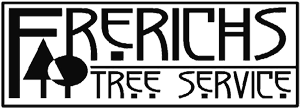Will Frerichs
402-476-0499
Call or text today for your free estimate for EAB insecticide injection.
Treatment of ash trees is not a one-time expenditure. Your tree will need treatment every other year throughout the duration of the EAB threat–estimated to last another 10 years. (In explanation, it is the untreated trees in our community which will need to die in order for the habitat for this pest to disappear, and that is a 10+ year process. After that has happened, management will be far simpler. An educated guess based on trends in the cities that were affected ahead of Lincoln, is that 10% or fewer of all ash trees will receive the care necessary to survive for the next 10 years. Ash tree survival without treatment for 10 years is likely to be far less than 1%.) Obviously treating your tree now does not mean that you must continue to treat it in the future, BUT there really are very few good reasons to start treating if you don’t have the resolve to continue later on, and this is why it makes sense to have a full understanding of this process before you begin. Now really is the time to decide if you want to spend your money treating your ash tree or spend it to remove it when it dies. Click here for my notes which can help you make this decision.
There is some variation in treatment cost based on the size, health, and number of trees you have to treat. My standard cost for a 2-year treatment is $9 per inch of tree stem diameter measured at breast height, plus sales tax. This is for treatment at a rate of 5 mL per diameter inch using the industry standard 4% active ingredient of emamectin benzoate*. Discounts apply for associations or home owners with multiple trees to treat, and in a variety of other circumstances that are specific to your tree(s) and situation. The inflation or deflation of US dollars in future years, and changes in the price of emamectin benzoate are also likely to affect future pricing of EAB treatments. I may honor a competitor’s price if you can provide their written estimate including the actual amount (milliliters) or rate of application (milliliters per diameter-inch) and the name of the insecticide used.
I am happy to stop by and measure your tree, but if you want to estimate the cost of treatment yourself you can do so by measuring the diameter of your tree in inches. Use a rope or tape measure to capture the distance AROUND the stem at a height 4.5 feet above the ground. NOTE: This is the circumference of the tree, not the diameter! To compute the diameter at breast height (dbh) you will need to divide the length measured around the tree in inches by 3.14. Smaller trees may be the diameter of an adult’s thigh, approximately 6-8 inches. Mature ash trees are much bigger; similar in diameter to a car or large truck tire or small to large garbage can: 24-36″ in diameter. All but young saplings (which commonly lack the features of a tree worth saving) and a few mammoth trees will be between these ranges.
In summary, a 2-year treatment for a 20″ diameter ash tree (which, for reference, will typically be nearly 50 feet in height) using emamectin benzoate (commonly trademarked and marketed as Treeage* and Mectinite) will cost $180 plus sales tax (insect control is a taxed service in Nebraska: 7.25% within Lincoln city limits, less outside city limits.) Please note the cost is variable since the dose of insecticide applied is variable based on various criteria: health factors of the tree, location (with respect to known EAB activity in Lincoln), and treatment history.
*Be aware that there is a commonly used variation of Tree-age (Tree-age R10) that is produced in a higher concentration of the active ingredient than 4%–actually it is 9.7%, such that an application rate, as per the pure math, of 2 mL per diameter inch is equal to my commonly utilized 5 mL per inch rate made with a 4% active product. This information can be used to make a direct comparison of my pricing with that of competing services, by taking into the account the important element of the amount of this expensive chemical that is being applied to your tree. At the $2,000+ cost per gallon, the chemical comes to approximately 40% of the cost of the job.
Click here to go back to the home page.




